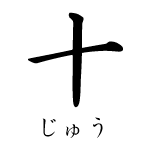 |
 |
Ten |
Yen |
Now
let's look at how 'money' is
represented in Chinese characters
As
you can see this is the character for 'money'
or 'kane' in Japanese. This character
can also be read as 'gold' or
'kin' in Japanese. You will be re-introduced
to this character again in a later lesson as we
discover it's application in representing
a day of the week as well.
Next, let's have a look at some more numbers which
will be extremely helpful when going shopping
or ordering from a menu. Just remember
that the Japanese number system
is a little different of the way you are probably
used to expressing numbers. We'll talk about that
more after we have tackled the next 3 characters.
This
is the character for 'one hundred'
or 'hyaku' in Japanese. The way
you pronounce this character depends on the number
that precedes it. Let's take a look at some examples:
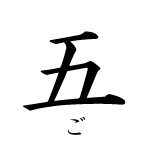 |
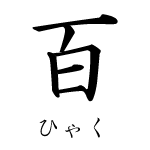 |
Five |
Hundred |
This
is pronounced as introduced, 'go hyaku'.
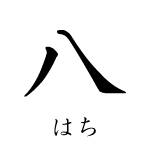 |
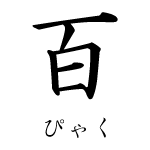 |
Eight |
Hundred |
This
combination is a bit different in 2 ways.
First: 'hachi' becomes 'ha'
Second: 'hyaku' becomes 'ppyaku' (for
ease of use when speaking). As you probably have
noticed there 'ppyaku' is spelt with 2
p's. This indicates a pause and would
be pronounced 'ha-pyaku'. The
same is true for 'six hundred'
(see list below).
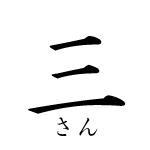 |
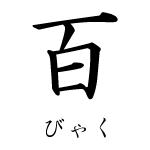 |
Three |
Hundred |
This
combination results in one more variation on 'hyaku'.
'san' remains the same, yet
'hyaku' changes to 'byaku'
(for ease of use when speaking).
Take
a look below to see when these changes take place
when using 'hyaku'.
100 - 'hyaku'
200 - 'ni hyaku'
300 - 'san byaku'
400 - 'yon hyaku'
500 - 'go hyaku'
600 - 'ro ppyaku'
700 - 'nana hyaku'
800 - 'ha ppyaku'
900 - 'kyu hyaku'
Alright, so let's move up a decimal
point.
This
is how 'thousand' is represented in kanji.
It is pronounced 'sen' unless
used in conjunction with 3 (i.e 3,000) in which
case 'sen' becomes 'zen' as in 'san zen'.
Now, let's look at our final kanji for this lesson.
The following kanji is pronounced 'man'
(maa-n) and it represents a unit of
ten thousand.
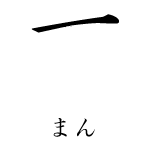 |
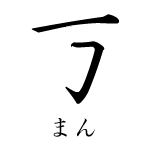 |
|
|
This
brings us back to the point I mentioned before
about the differences bewteen the Japanese
number system and that of the West.
To get a better understanding, here's an example
using the number 22,500. Written in Japanese
(romaji) this is 'ni man ni sen
go hyaku' this literally translates into
'two ten thousands two thousand five hundred'.
In English this would be proposterous to say,
instead we use the less lengthy 'twenty
two thousand five hundred'
Be aware of this difference when learning to use
numbers (especially money) in Japanese. It will
help you learn faster and you'll be able to understand
why Japanese people have difficulty learning to
use numbers over 10,000 in English.
Good work for today and I'll see you next lesson
when we delve into Kanji Lesson 3 - Time